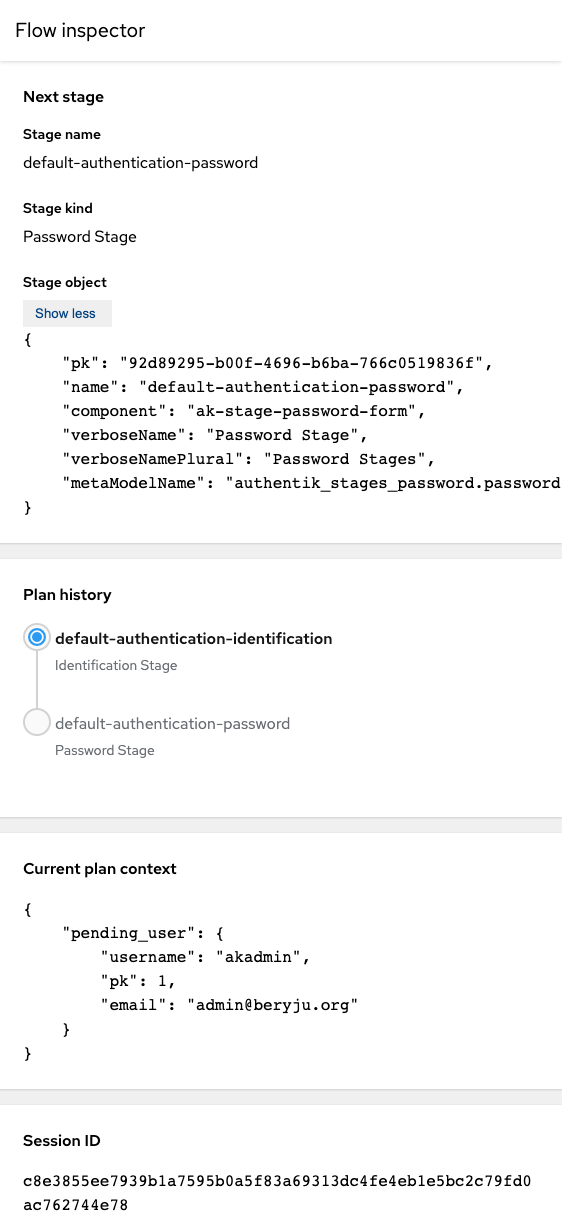the option name was changed a while back but the docs still used the old name Signed-off-by: Jens Langhammer <jens@goauthentik.io>
1.7 KiB
| title |
|---|
| Inspector |
The flow inspector, introduced in 2021.10, allows administrators to easily figure out how custom flows work, inspect the current context and debug issues.
:::info
When running a flow with the inspector enabled, the flow is still executed normally. This means that for example, a user_write stage will actually write user data.
:::
The following infos are shown in the inspector
Next stage
This is the currently planned next stage. If you have stage bindings configured to Evaluate when flow is planned, then you will see the result here. If you however have them configured to re-evaluate (Evaluate when stage is run), then this will not show up here, since the results will vary based on your input.
Shown is the name and kind of the stage, as well as the unique ID.
Plan history
Here you can see an overview of which stages have run, which is currently active, and which is planned to come next. Same caveats as above apply.
Current plan context
This shows you the current context. This will contain fields depending on the same, after an identification stage for example you would see "pending_user" be set.
This data is not cleaned, so if your flow involves inputting a password, it will be shown here too.
Session ID
The unique ID for the currently used session. This can be used to debug issues with flows restarting/losing state.
Access to the inspector
By default, the inspector can only be enabled when the currently authenticated user is a superuser. When running authentik with debug-mode enabled, the inspector is enabled by default and can be accessed by both unauthenticated users and standard users.
